
Client
Dave Mazierski
Dr. Anne Agur
Year
2021
Media
Adobe Photoshop
Audience
Anatomy Students
About
This piece was created to visualize a unique view of the facial muscles of expression as well as the lingual muscles and vessels.
Final image

Process
Inspiration & Brainstorming
Organization and compilation of reference materials was all done in Miro. I had several ideas while brainstorming a topic for this project, but I decided to go with a 3/4 view of the face to visualize the facial muscles of expression. This was heavily inspired by the TV show Breaking Bad and the death of the fictional character Gustavo Fring.
Brainstorming and inspiration boards


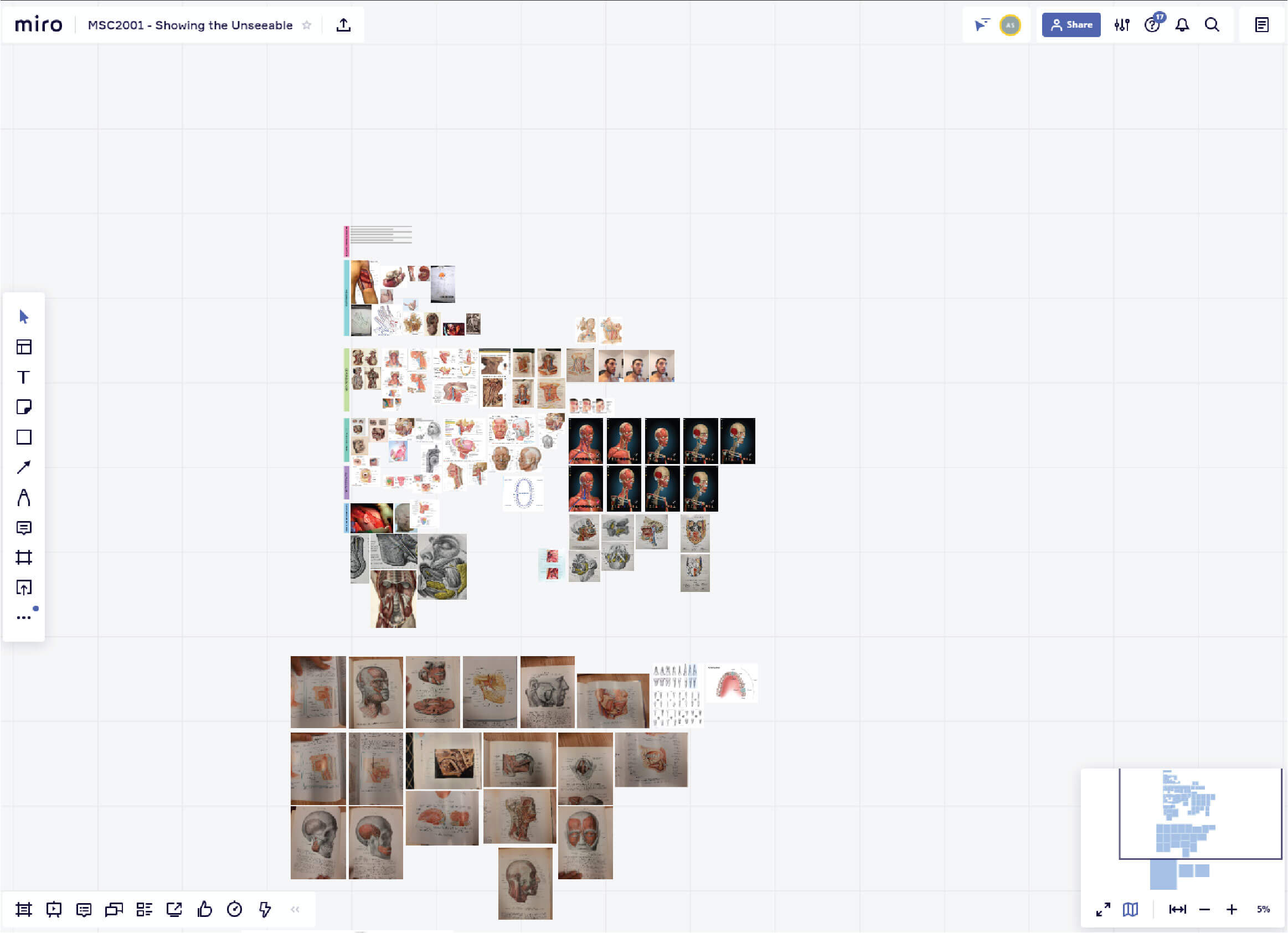
Linework & Refinement
A preliminary sketch was done in photoshop of a 3/4 view of the facial and neck muscles with various sections across different muscles. The intention was to capture a unique view of the facial muscles while maintaining the features of Gustavo Fring. After consulting with Dr. Anne Agur and re-evaluating the feasibility of the project for the given timeline, I decided to focus on the lower 2/3 of the face. After reviewing several anatomy textbooks, Anne and I also thought it would be a good idea to show the genioglossus with a section cut out in order to see important vasculature to the tongue since it is rarely shown in anatomical drawings. After getting a very rough outline done, my next step was to adjust the positioning of different muscles and sections and get a clean linework in preparation for rendering.
Initial Lineart
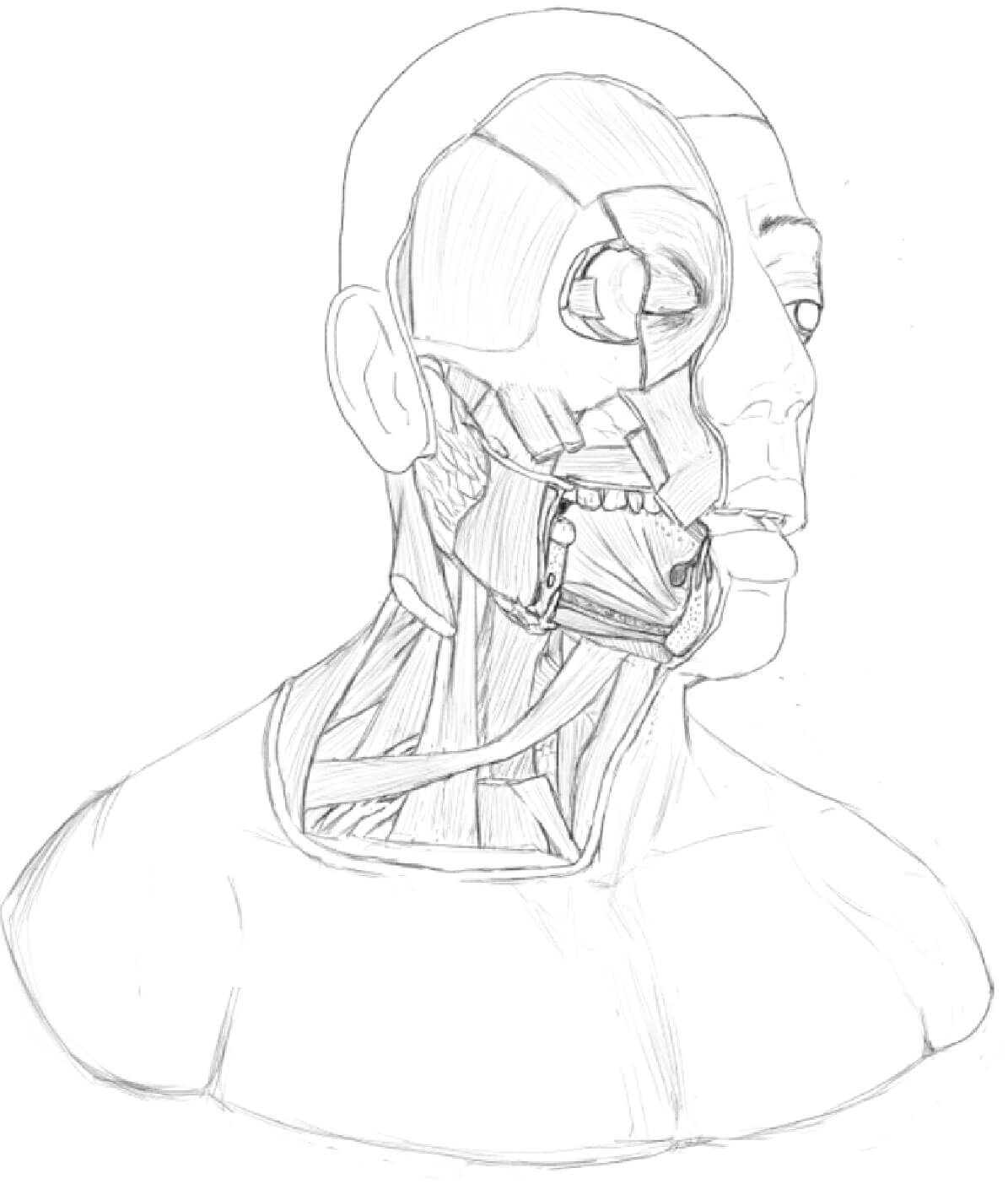

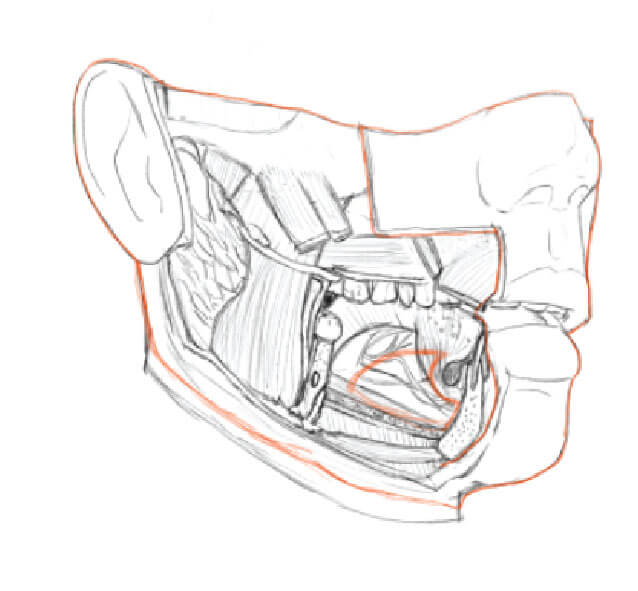
Anatomical References
Some of the best references I used were taken from Netter and Pernkopf. They both had similar sections to mine and were an amazing source of reference material for textures and the general position of the different muscles and glands. The identification of the zygomaticus major and minor was especially troublesome and I heavily relied on these diagrams to help with my illustration. Along with those, these were also very useful for the identification of: Zygomatic bone, buccinator, masseter, mandible, submandibular gland, mylohyoid, anterior belly of digastric, transverse facial artery, the position of the parotid duct in the oral cavity, and superficial temporal artery and veins.
Anatomical References

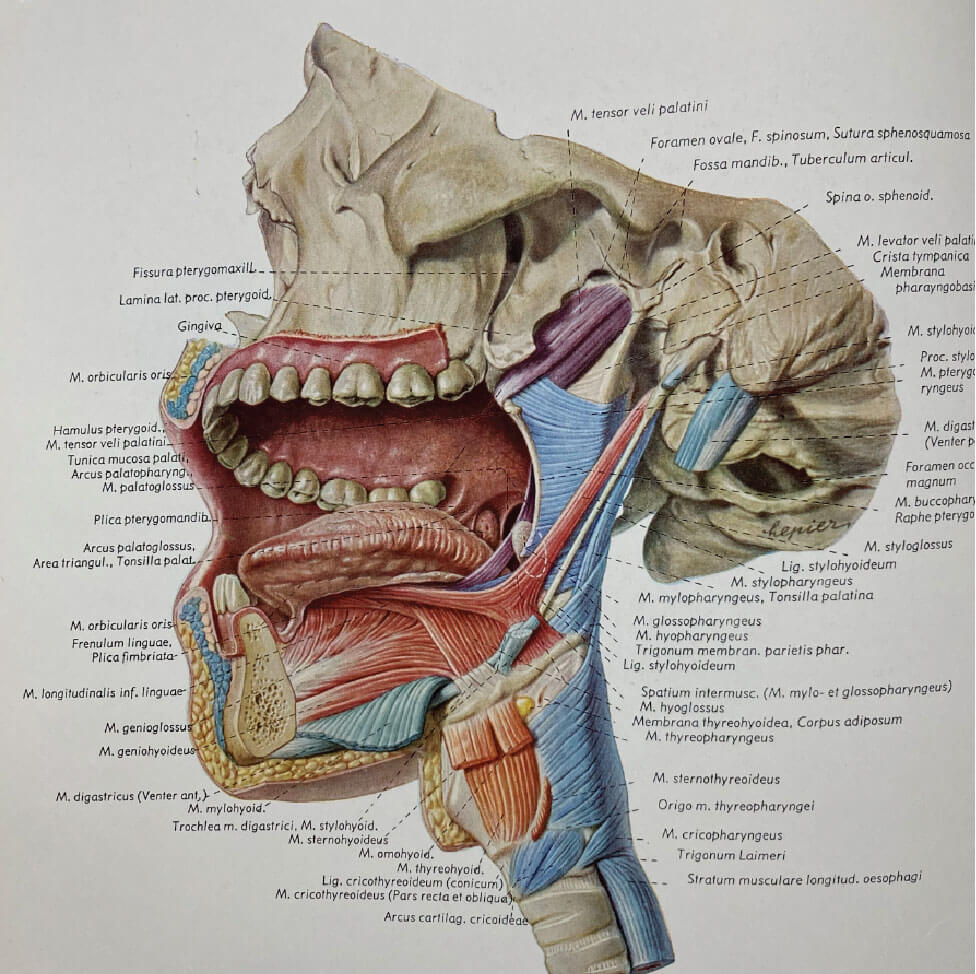
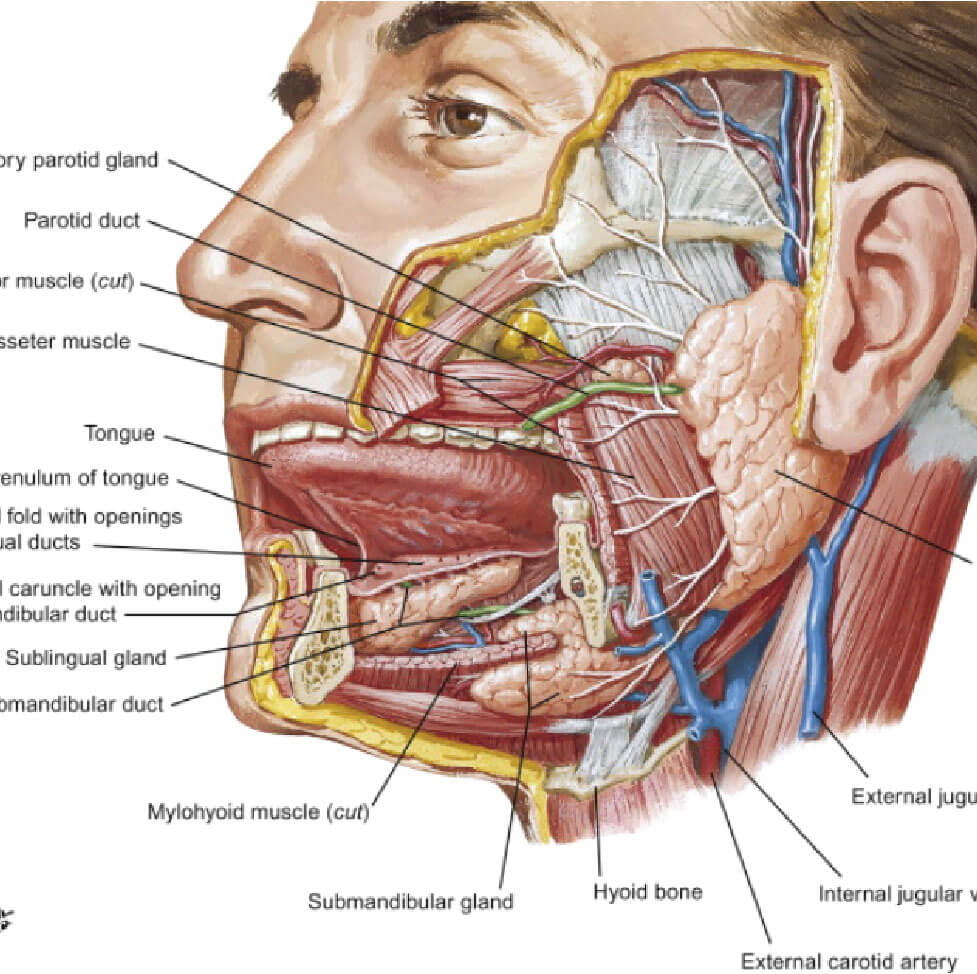


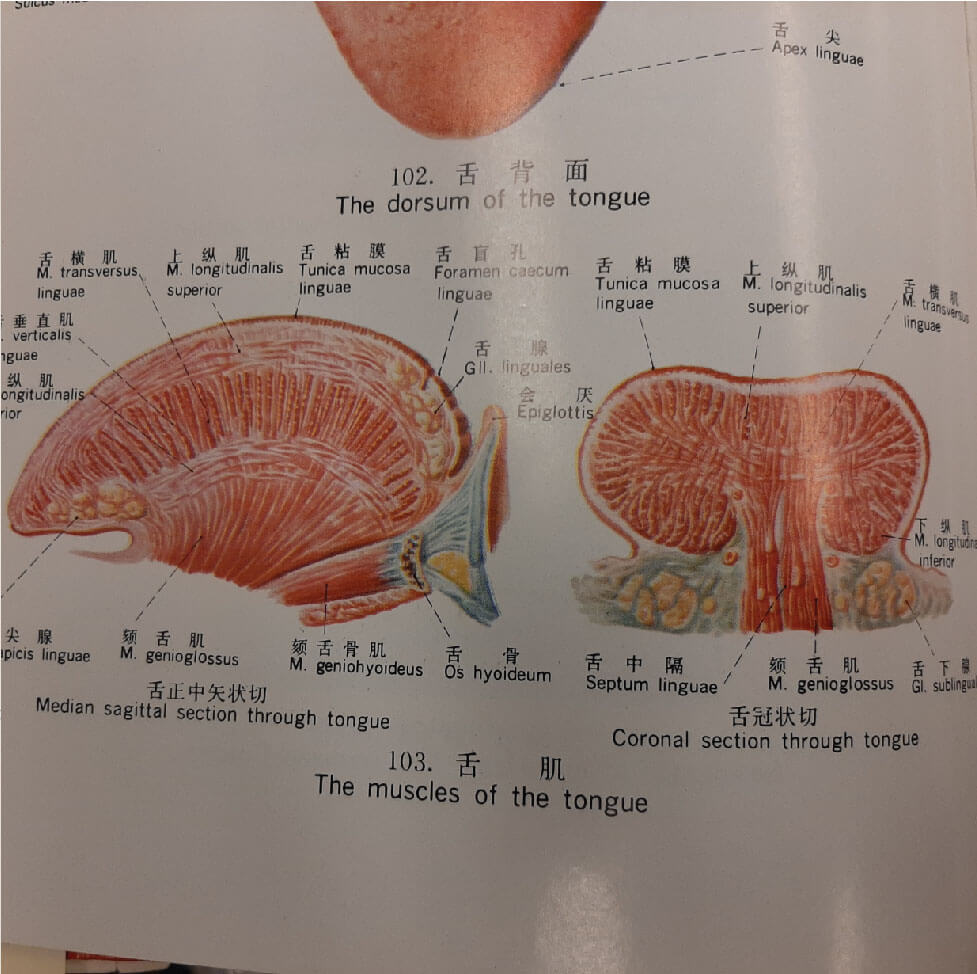
Final Linework
Following multiple revisions, a cleaned up line drawing of the illustration was made in photoshop.
Cleaned Lineart
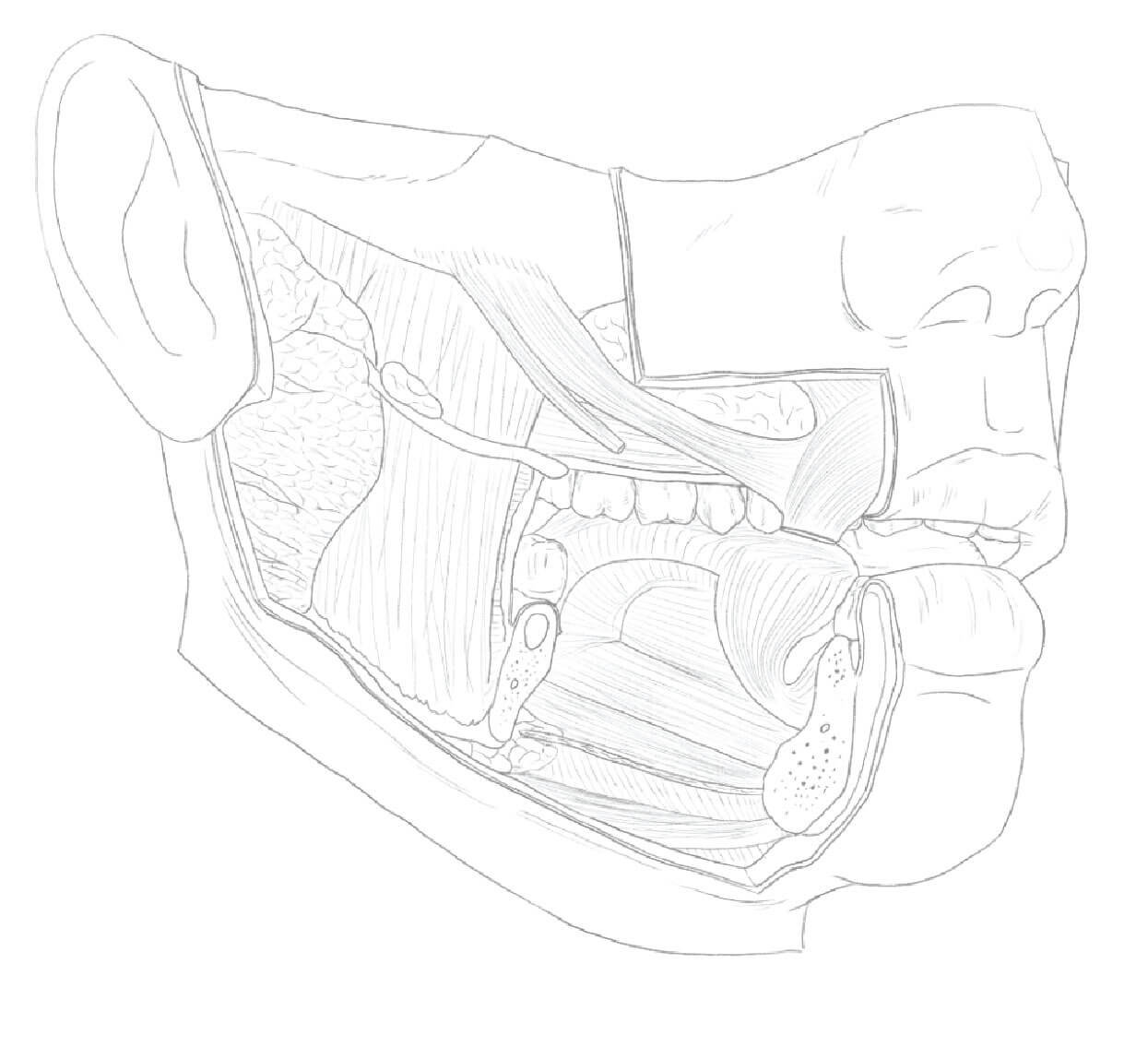
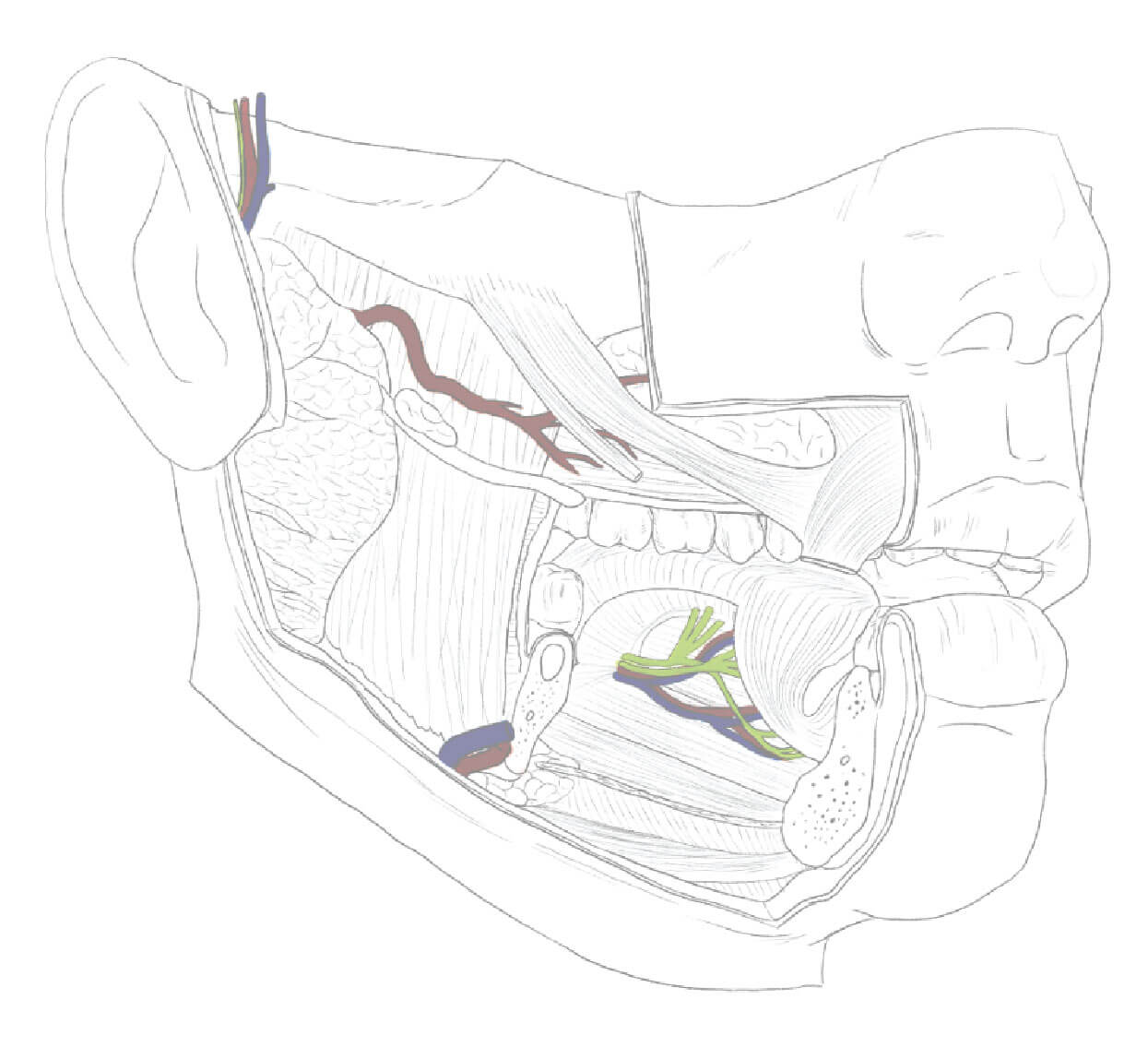
Rendering
A black and white render was created first before coloring. The color palate was inspired based on the skin tones of Giancarlo Esposito (actor who played Gustavo Fring in Breaking Bad) and illustrations from Frank Netter and Joseph Henri Jacobs. Color was added in photoshop using gradient map overlays.
B&W render and Color Pallettes

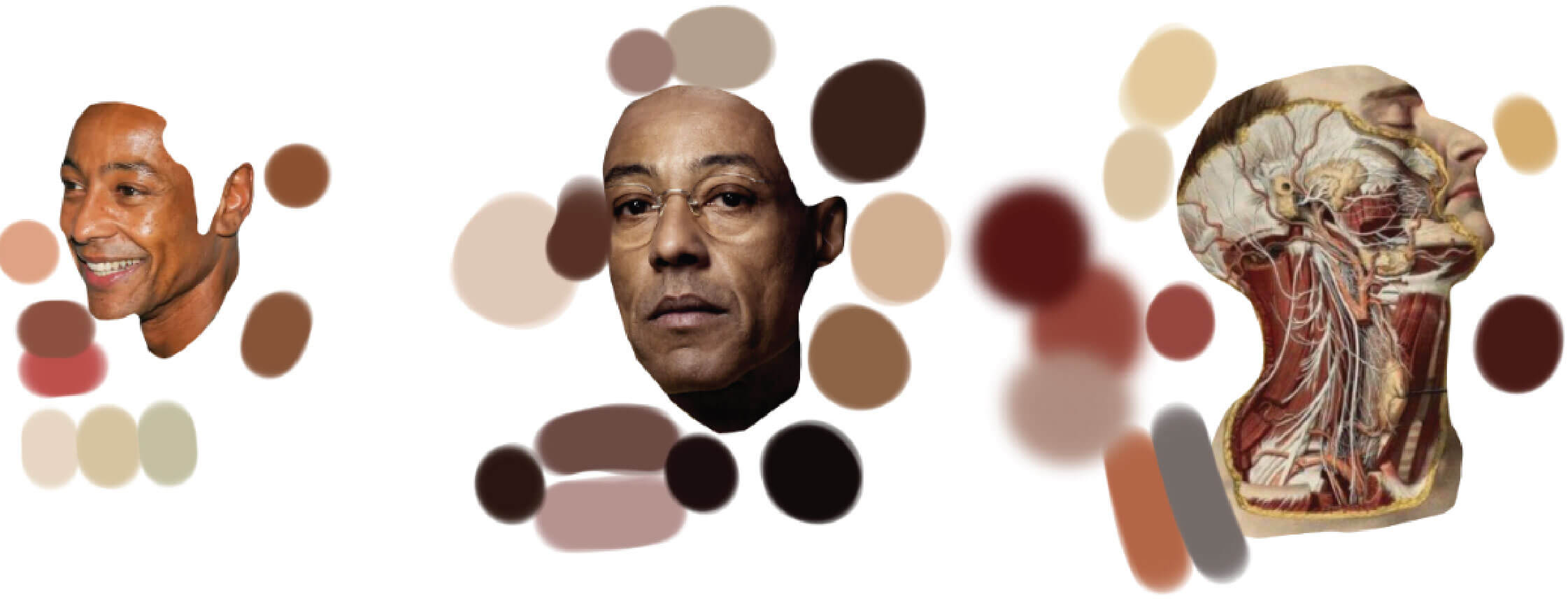
Final Color Render
